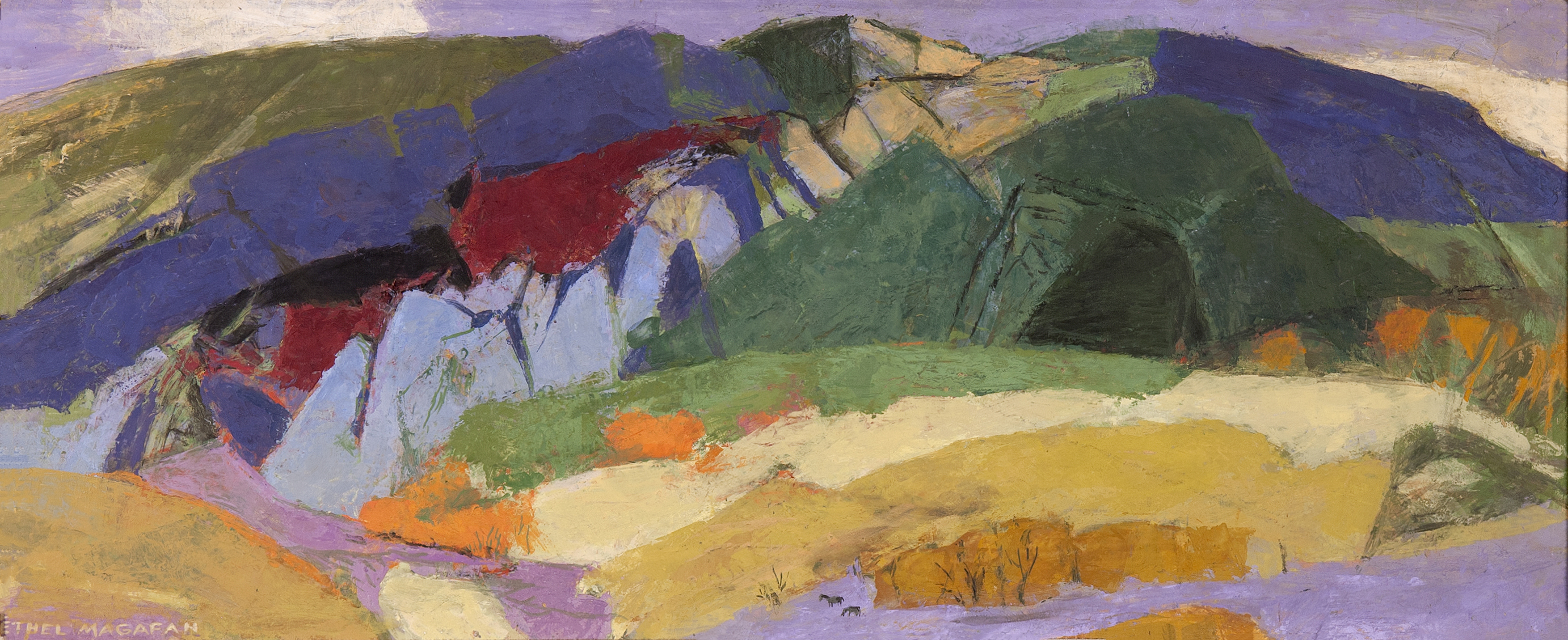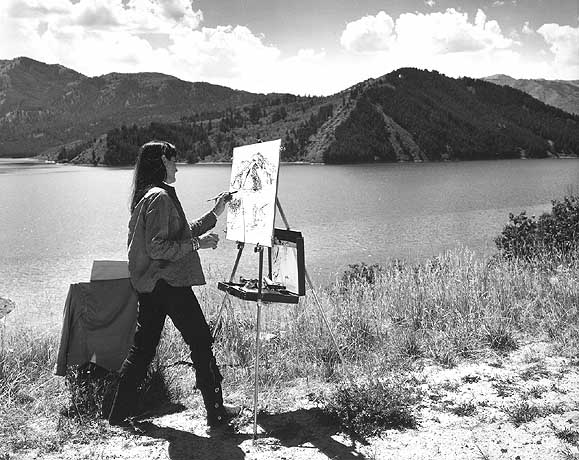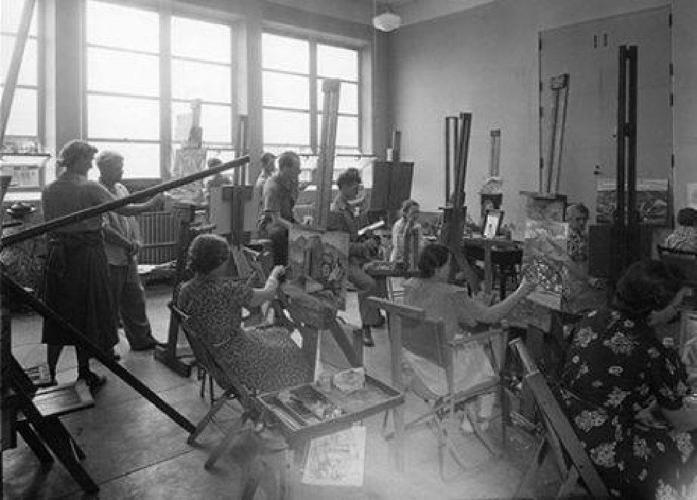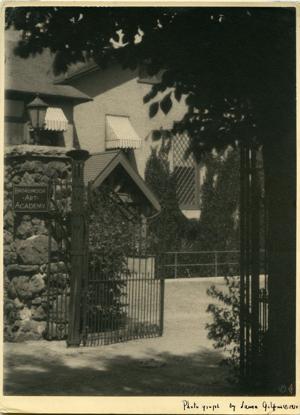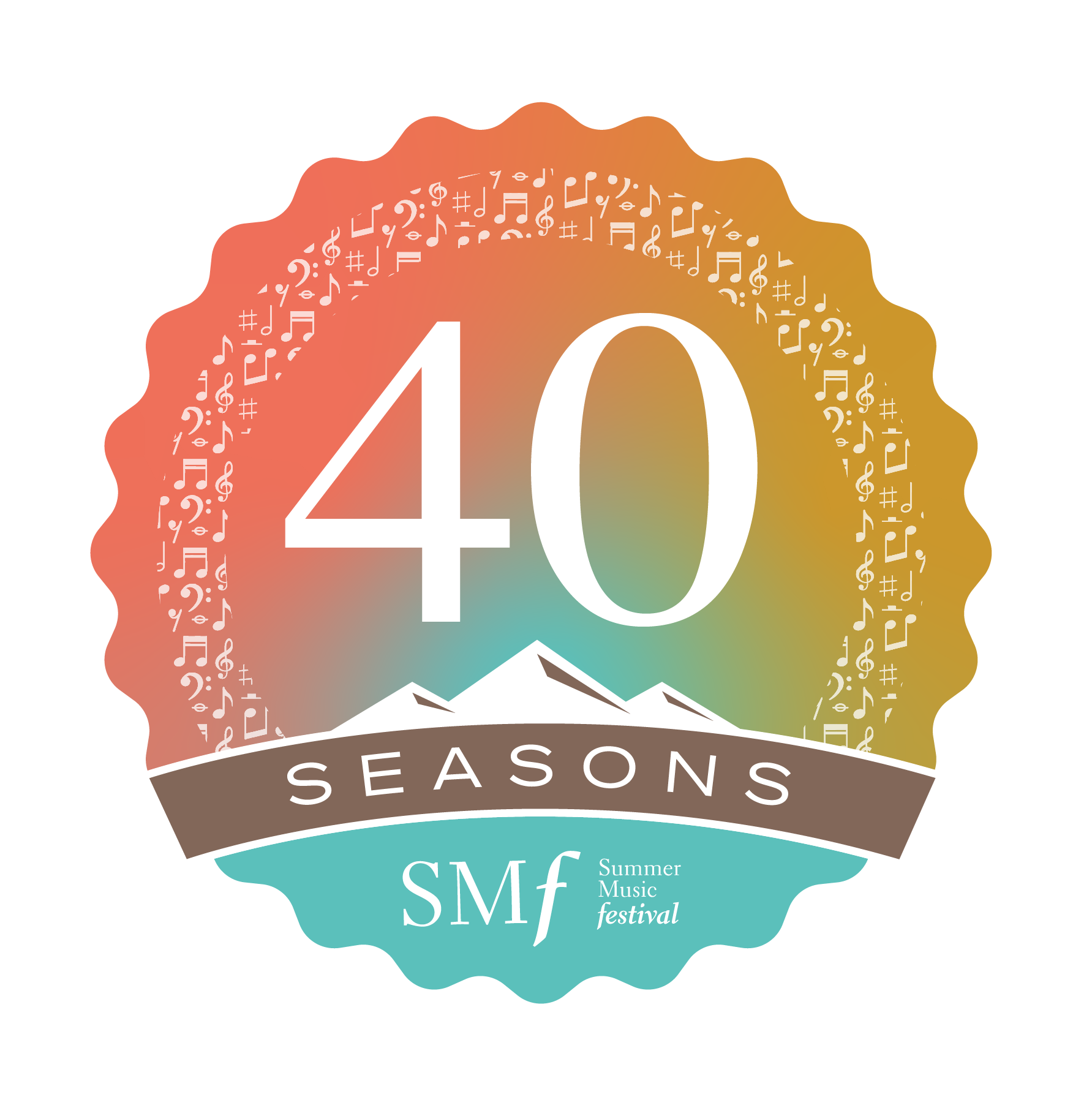The Summer Music Festival is pleased to feature Meadows in the Valley, by artist Ethel Magafan, unknown date, oil and tempera on untempered masonite panel, to celebrate 40 years bringing chamber and orchestra music to Colorado College and the Pikes Peak Community. This unique painting is part of the permanent collection of works in O Beautiful! Shifting Landscapes of the Pikes Peak Region at the Fine Arts Center at Colorado College. See more about the history of art of our region at The Broadmoor Academy at the Fine Art's Center. The Summer Music Festival finds this piece suits the mood of the festival over many summers, with our majestic mountains, and the summer air filled with beautiful sounds from the festival. Like the Broadmoor Art Academy and now the Fine Arts Center, the Summer Music Festival has contributed to the cultural landscape of the college. The festival will feature details of this work in its digital and print publications and program materials.
Ethel Magafan, whose aartistic training occurred at the Colorado Springs Fine Arts Center under the tutelage of Boardman Robinson and Frank Mechau, must have been inspired by Katharine Lee Bates’ famous 1893 poem, American the Beautiful. In her painting the rich purple colors of the foothills of Pikes Peak remind us of the sublime grandeur of where we live and how our natural landscape inspires artists from many generations.
As noted by the Fine Arts Center: " The natural landscape of spacious skies, amber waves of grain, and purple mountains majesty of which Bates wrote, and would later become the famous anthem America the Beautiful, provided ample inspiration to late 19th and early 20th century painters. By the early 20th century, Colorado Springs was a popular tourist destination and a celebrated place for healing. Known as “Little London” largely due to significant British financial backing, this nickname also represents a desire for the city to create a cultural landscape mimicking established cosmopolitan cities. The Broadmoor Art Academy was born in 1919 from these expressed ideals and soon attracted students from across the country to immerse themselves in the landscape. The Broadmoor Art Academy shifted in name and facility to the Colorado Springs Fine Arts Center in 1936, but the ongoing commitment to art education remained a pillar of the institution. The subsequent years were unprecedented in terms of artistic production. Informed by modernism and abstraction, creatives such as Mary Chenoweth and Robert Motherwell challenged traditional expectations by producing works that were on the leading edge of the contemporary American art scene. A century after the founding of the Broadmoor Art Academy, we celebrate the ingenuity of the artists and patrons who helped to shape the Colorado Springs Fine Arts Center at Colorado College into the fine museum, performing arts theatre, and art school it is today. Through these works, created by exceptional visual artists over the course of 100 years, we can witness the dramatic shifts that have occurred in the physical and artistic landscapes of the Pikes Peak region. As Colorado Springs continues to grow, so does the importance of a strong cultural identity. We are proud to have been an early and ongoing participant in this endeavor and strive to embrace the many avenues toward a doubly inclusive and dynamic FAC for all."
Ethel Magafan, the daughter of a Greek immigrant father, and Polish mother, was born August 10, 1916, in Chicago, Illinois. Raised in Colorado Springs, Ethel was exposed to the work of Matisse, Picasso and Cézanne by her high school art teacher, Helen Perry, who herself had been a student at The Art Institute of Chicago. Ethel and Jenne studied composition, color, mural designing and painting at Mechau's School of Art in downtown Denver in 1933-34. In the summer of 1934 and for a time in 1936 they apprenticed with Mechau at his studio in Redstone, Colorado. Ethel worked as a fashion artist at a department store in Denver until she could enroll in the Broadmoor Art Academy (now the Colorado Springs Fine Arts Center) where they studied with Mechau, Boardman Robinson, and Peppino Mangravite. Ethel and her twin sister, Jenne, became widely known for their murals painted during the Depression. Ethel's first Government commission was to produce a painting for the U.S. Post Office in Auburn, Nebraska. Other paintings commissioned by the U.S. Government hang in the U.S. Senate Chamber, the Social Security Building, and the Recorder Deeds Building in Washington D.C., and in U.S. Post Offices in Wynne, Arkansas; Mudill, Oklahoma; and Denver, Colorado.
You can listen to an interview with Ethel Magafan recorded in 1964 with the Smithsonian's Archives of American Art.



